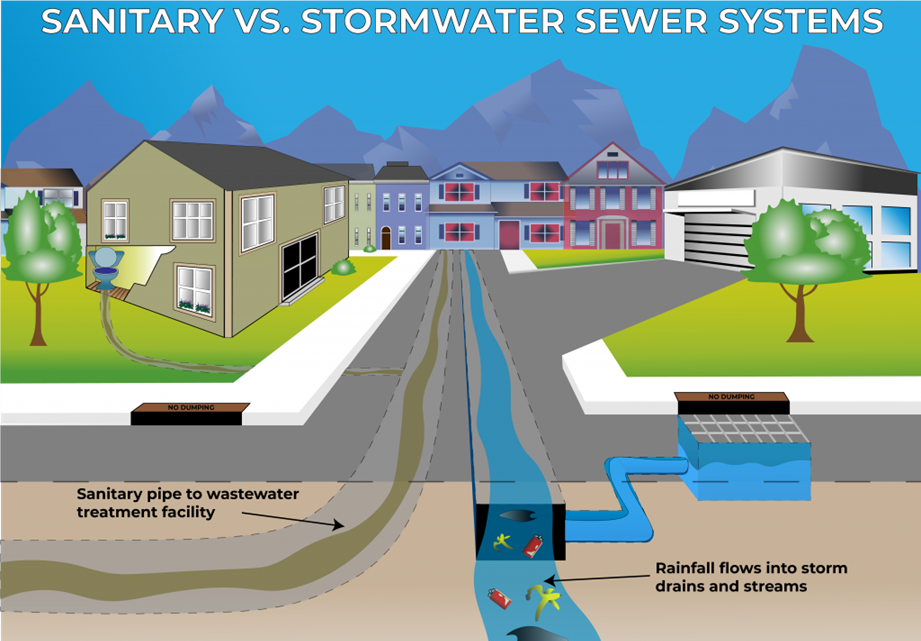Programs, Policies, and Procedures
Latest News
Environmental Compliance
Policies within Environmental Compliance are driven by the state's commitment to protect the air, water, and soil for all Californians to enjoy. Agencies such as Cal/EPA, California Water Boards, Southcoast Air Quality Management District, and the Los Angeles Sanitation District each play a role in helping to preserve our environment. The following policies assure that CSUDH does its part to keep our campus and our state safe for future generations.
Stormwater
The CSUDH campus has may storm drains that lead directly to the ocean, in particular, the Dominguez Channel and the Port of Los Angeles (Pacific Ocean). These drains must be used exclusively for rainwater. The State Water Board and the Los Angeles Regional Water Quality Control Board regulate storm water runoff to ensure that pollutants do not enter these drains.
Stormwater Awareness Presentation [PDF]
Wastewater
In contrast, wastewater is discharged through a sanitary sewer system. This includes waste from toilets, sinks, and drains. Grey water from washing machines and dishwashers are also connected to the sewer. Discharges are regulated by the Los Angeles County Sanitation District to keep hazardous substances out to the collection system.
Most businesses in California are required to develop written plans for their use and protection of the sewer system. These include:
The Environmental Protection Agency requires businesses that store more than 1,320 gallons of oil-based products (in containers greater than 55 gallons) to maintain a document outlining the plan in place to prevent, prepare for, and respond to oil spills. The plan lists the contents and location of each container and the accompanying measures in place (such as secondary containment).
CSUDH Spill Prevention Control and Countermeasure Plan [PDF]
When secondary containment is impractical, businesses are required to provide a detailed oil spill response and removal plan that addresses controlling, containing, and recovering an oil discharge in quantities that may be harmful to navigable waters or adjoining shoreline.
Disposing of industrial and chemical wastes require clear and simple procedures that everyone on campus can follow. When wastes are disposed of improperly, fines can be steep. Each violation can cost the campus up to $71,264 dollars per day.
The two types of waste that EHS manages are universal wastes and hazardous wastes.
Universal Waste
These are waste materials that are not considered hazardous, but have elements that need to be prevented from free release into the environment. They include items such as batteries, fluorescent lightbulbs and electronic devices. For a better understanding of universal wastes, please visit:
Hazardous Waste
These are chemicals that are dangerous or can have a harmful effect on human health or the environment. They include items such as solvents, paints, fuel and oil, pesticides, laboratory chemicals. For a better understanding of hazardous wastes, please visit:
Recycling
Recycled materials such as cardboard and plastics are not managed by EHS. For information about recycled wastes, please go to CSUDH's
Medical waste includes any biohazard, pathology, pharmaceutical, or trace chemotherapy waste. It may be waste from medical treatment facilities, such as the Student Health Center, or the Athletics Department. It may also be waste from work conducted in research or classroom laboratories. These may include biology, chemistry, physics, nursing, and health and human services.
The California Health and Safety Code outlines how medical wastes must be stored, collected, and disposed of. This plan establishes the procedures by which the medical waste at CSUDH is managed.
Program
Medical Waste Management Plan [PDF]
Annual Review
The Medical Waste Management Plan is reviewed annually. If no updates are made, the entry for that year will be noted as 'reviewed'. Changes to the plan are listed below. If the program undergoes significant restructuring or revision, the new policy will be identified along with the justification for the change.
2025
Revised 2/26/2025
The definition for biohazardous waste was clarified:
The definition now states “visible blood or other potentially infectious material (OPIM) where amounts are either scrapable or saturated on PPE or material such as kimwipes, bandages. Biohazardous waste to be disposed of in regulated waste bags and containers should have visible blood or other potentially infectious material (OPIM) where amounts are either scrapable or saturated on PPE or material such as kimwipes, bandages, etc.”
All PPE and material that does not contain visible blood or OPIM can be discarded in municipal waste streams.
2024
Reviewed on 4/2/2024
2023
Revised 6/23/2024
Updated - Sources of Medical Waste Generation tab - New approximate quantity per month, 200 pounds (p. 3)
Added - the following verbiage, in bold, was added throughout the plan "biohazard bags containing any amount of waste shall be collected "NO LESS THAN ONCE A WEEK"
Added - Contact person, Chemical Hygiene Officer (p.8)
2022
Revised 6/21/2022
Updated - Sources of Medical Waste Generation tab - New approximate quantity per month, 108 pounds
Updated - Sources of Medical Waste Generation tab - Added new location WH B-365
Updated - Medical Waste Hauler/Treatment tab - Updated new alternative hauler, which is North State Environmental
